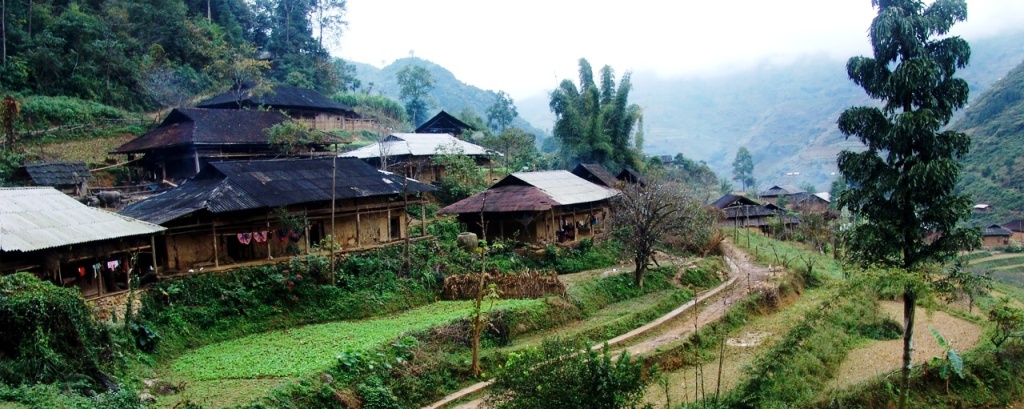Dự thảo Luật Đất đai (sửa đổi) hiện nay đang được tổ chức lấy ý kiến nhân dân. Có thể nhận thấy rõ một số hạn chế trong Dự thảo Luật Đất đai (sửa đổi) như sau:

The current draft amended law on land is made public for people's opinions. Clearly, there remain several constraints in the draft amendment as follows:
Firstly - Article 34, 35, 36 regarding land use planning. The removal of the communal level of the planning and land use plans in a number of contents in the above articles is not appropriate and inconsistent with the 1992 Constitution and the current Draft New Constitution. The reason is that the Constitution includes the commune as a state administrative unit (mentioned in Article 118 of the Constitution in 1992 and Article 115 of the draft new Constitution). The commune-level administrative unit has managerial agencies, that is, representative bodies of the state power at local level. According to the provisions in Article 119 of the Constitution in 1992 and Article 116 of the Draft New Constitution, the "People's Council is the state power at local level, representing the aspirations and rights of ownership of the people, elected by the local people, responsible to the local people and the higher level-state agencies ". The commune-level People's Council represents the people in the commune regarding ownership of land and competence to carry out the land ownership in the commune. Therefore, in order to have the basis of competent representation and implementation of land ownership in the commune, it must have planning and land use plans at communal level.
Besides, the land allocation to different users to use in long-term stability or the limited time, land users have a right to know, participate in discussion on activities of the state in the future related to their land as well as directly implement the land use planning and plans. So, t the planning and land use plans at district level is not able to be fully detailed and enough relevant information related to land parcels of different users as well as different types of land in the village and commune.
It is important to recognize that the land owned by the whole people or other term is people’s ownership, land users are co-owners. Being as a representative of the land owners, one must listen to the opinions of different land users in the process of planning and land use planning. If the planning and land use plans at commune level is removed, the land users who directly use land shall not be involved in discussion and comment during the making and implementation of the planning and land use plans. This would lead to the situation of bureaucracy, lack of democracy and untransparency, causing complaints, disputes and corruption.
The commune is where the planning and land use plans are directly implemented, but is not recognized by the Law. So that, the planning and land use plans at district level shall not be guaranteed the viability, causing many deviations from reality. The planning, land use planning at communal level shall create conditions for the users to register their land use rights and supervision of the people in the course of conversion of land use purposes as well as land users.
Therefore, the commune-level planning and land use plans should be considered as most importance in the system of national land use planning.
Secondly, Clause 1 of Article 131 and paragraph 1 of Article 132 provide provisions regarding only allocation of special and protection forestland to organizations are inconsistent. Following reasons may be considered. The provisions of these clause conflict with clause 3 of Article 124: “households are allocated the protection forestland; conflict with Clause 3 of Article 126: “Agricultural land is allocated by the State for the community with the aim of protection and conservation of cultural identity associated with the custom " - this land is normally the land of natural forests and may be located in protection forestland; conflict with the clause 5 in Article 131: ''the Government shall specify the allocation, allotment of protection forestland; rights, obligations and interests of organizations, households and individuals allocated or contracted the protection forestland”. In fact, previously, the protection forestland was allocated to households, individuals and communities. If according to these regulations, how would be handled the case that the areas of protection forestland which have been allocated to households, communities?
The reality also shows the spirit forests (quality and size are equivalent to the criteria of special forest) which have been self-managed by the community's customary laws, and transmitted through many generations for hundreds of years are managed very effectively. For example, nearly a thousand hectares of the Po Mu forest on the limestone which have been traditionally managed by the customary law then were allocated to households and community of the Hmong community in On Oc village, Muong Lum commune, Yen Chau district, Son La province under the Decree 163/CP/1999 with the effective results...
Besides, we also need to look at a view that in the residential area located in the protected forest areas, special-use forests, but not having production forest – where are often limited arable land, so lacking of land for production, people need to be allocated the protected and special-use forestland in order to combine with agro-forestry production, and benefits from forest products to ensure livelihoods.
Therefore, the draft amended law on land is required to have provisions related to the allocation of special-use and protected forestland near the residential areas to households and communities for the sake of protection, development of forest in associated with agro-forestry production, maximizing social responsibility in management and development of natural resources as well as preserving and promoting the ethnic cultural identity. /.
Source: ĐCSVN